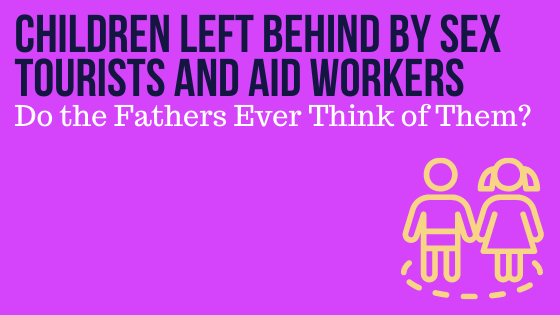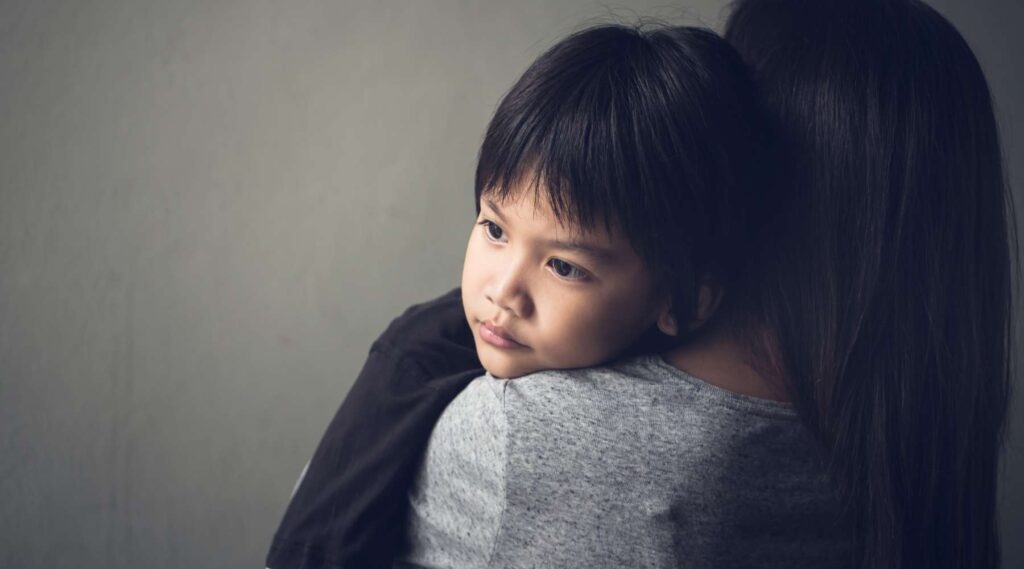Today’s blog is written by Professor Andrew MacLeod, Chairman Griffin Law (UK), Visiting Professor Kings College London (War Studies and Genetics), and co-founder www.HearTheirCries.org (anti-child abuse charity in Switzerland). More background on him can be found here: https://www.griffin.law/andrew-macleod/ and here: https://www.kcl.ac.uk/people/andrew-macleod
Read the full version in the November 2020 issue of The ISHI Report.
In December 2019 Susan Bartels at Queens University and Sabine Lee at Birmingham University released to the world a report identifying 265 children born of United Nations Peacekeepers in Haiti and since abandoned.[1] While this number may seem shocking there are two points that will shock the reader more.
Firstly, this huge number of children were identified following interviews with just 2,500 women. Given there are more than 2.5 million women of childbearing age in Haiti, some 1,000 times more than those interviewed, one would hate to think just how many children have been fathered by UN peacekeepers and abandoned.
The second additional shock is the statement from UN Secretary General Antonio Guterres made at the 2017 High Level Panel on Sexual Exploitation and Abuse.
“First, sexual exploitation and abuse is not a problem of peacekeeping, it is a problem of the entire United Nations. Contrary to the information spreading that this is a question related to our peacekeeping operations, it is necessary to say that the majority of the cases of sexual exploitation and abuse are done by the civilian organizations of the United Nations, and not in peacekeeping operations.”[2]
The 265 children identified in Haiti from only 2,500 interviews, were fathered by peacekeeping soldiers of the UN. The UN Secretary General says that the problem of sexual abuse is bigger on the civilian side of the UN. So how big is the problem?
The truth is we just don’t know how big the problem is as the data available is so sparse.
The numbers quote above are a small proportion of the sex and child rape crimes committed by UN staff and peacekeepers over at least the last two decades. Neither the sex scandals of the UN in the Bosnian War dramatized in the 2010 film Whistleblower[3] nor the long running ‘Food for Sex’ scandals of the early 2000s[4] are covered in these figures. These figures are just for Haiti and just for UN peacekeeping soldiers, not the rest of the aid world.
We know from the Oxfam scandal of 2017 that Aid staff feel such a level of impunity to abuse that the even order their drivers to home deliver women, as happened in the Oxfam Haiti case.
What do we do about this mountain of sex abuse and the children left behind by impoverished women impregnated by men who are sent to conflict and disaster settings to do good? Surely these children deserve more justice than the empty statements of ‘zero tolerance’ given by the UN for nearly 20 years?
The sad truth is the problem of peacekeepers and aid workers abusing women and children overseas is a larger problem than the Catholic Church. That statement may be provocative, but think of it this way: There are more aid workers than Catholic priests, in more countries than the Catholic Church is present in, with better access to women and children while controlling food, water and shelter. What makes you think the average aid worker is ethically any better than the average Catholic Church priest?
It is important to note that this is not a question of ‘secret conspiracies’, rather a huge vulnerability to which there is no adequate preventive measures stopping abuse. It is inaction, not conspiracy, that is causing this problem.
Indeed in 2018 the British House of Commons Committee on International Development handed down a report into sexual exploitation by aid workers saying that the entire industry was ‘complacent verging on complicit’ and put the reputation of agencies before the protection of children.[5]
Technology may offer a new way to at least find the men that have left children behind and to hold them to account through courts of law.
In 2017 in California the ‘Golden State Killer’ was captured by taking DNA he left behind at the crime scene and comparing it to extended family members on public data bases. By mapping the extended family members, it is then possible to triangulate the family relationships and often identify the father.
In the case where a man has impregnated a woman or child in cases like aid worker sex abuse or sex tourist abuse, the child they leave behind has half of the father’s DNA.
We are evolving the Genetic Genealogy technology used in the ‘Golden State Killer’ case in California to track sex tourists, abusive aid workers and peacekeepers who have procreated children in the developing world. On behalf of the children we can find their fathers and allow the children to know their heritage, their extended family and seek appropriate child support.
Our secondary aim is to stamp out these abuses by tracking fathers, holding them to account and sending a signal to future potential abusers that one day abusers will face justice.
We have run six test cases in the Philippines with women who have been impregnated by either sex tourists or aid workers to prove both the technology and the legal procedures. Of the first six cases we have found five fathers: One is British, one American, one Canadian, two Australian and the sixth is likely Australian but we are unsure.
In these cases we have:
- M & M, 19 year old twin girls: The father consented to paternity confirmed with a court order. The father is now getting his daughters their UK passports and providing support. The children have come to learn that they have six siblings across three countries.
- S, a 12 year old boy. The father was ecstatic to learn he had a son. The child will be fully supported and is being accepted into the broader family.
- M2, an 11 year old girl: The father is identified but he denies paternity. The father’s brother (with whom we got the DNA match as an uncle) accepts the result as does the father’s mother. We are giving the family an opportunity to convince the brother before possibly escalating to legal action.
- J a 19 year old boy: The father is one of two brothers (Australian) who are almost impossible to track. The child’s aunt, half aunt, and grandmother have all been identified however they do not wish to be involved and are not helping.
- B, a 13 year old girl: The father has been identified and is Canadian. He originally consented and agreed but has since retracted his agreement and we are now seeking court orders.
While for decades the Aid industry has looked at ‘procedures and practices’ to try and reduce sexual abuse by their staff, these actions have failed. There are thousands if not tens of thousands of children around the world who have been fathered by UN peacekeepers, UN civilian aid workers and NGO aid workers.
Each of these children has the right to know who their father is, who their extended family is and each has the right to support. Today we have the technology to move beyond words and get real solutions for some of the world’s most vulnerable people.
We have proved now that the technology works and now have the technical ability to hold sex tourist fathers to account to a lesser or greater degree. During 2021 we will expand the test program we did in the Philippines to West and Central Africa. While we are not yet at the day when we can stamp out sexual abuse in the aid sector, we are getting closer. In the process though we will be able to get justice for many children whose only question is “Daddy, do you ever think of me?
ReferenceS:
[1] see https://theconversation.com/they-put-a-few-coins-in-your-hands-to-drop-a-baby-in-you-265-stories-of-haitian-children-abandoned-by-un-fathers-114854
[2] 18 September 2017 Secretary-General’s address to High-Level Meeting on the United Nations Response to Sexual Exploitation and Abuse. UN Document A/71/818. Retrieved here: https://documents-dds-ny.un.org/doc/UNDOC/GEN/N17/054/00/pdf/N1705400.pdf?OpenElement
[3] http://www.imdb.com/title/tt0896872/
[4] http://www.washingtontimes.com/news/2006/may/9/20060509-090826-9806r/
[5] https://publications.parliament.uk/pa/cm201719/cmselect/cmintdev/840/840.pdf
WOULD YOU LIKE TO SEE MORE ARTICLES LIKE THIS? SUBSCRIBE TO THE ISHI BLOG BELOW!
SUBSCRIBE NOW!




